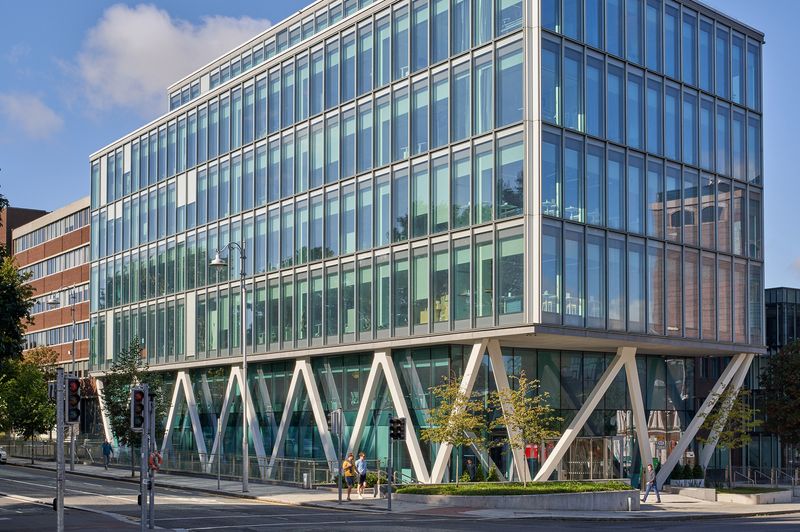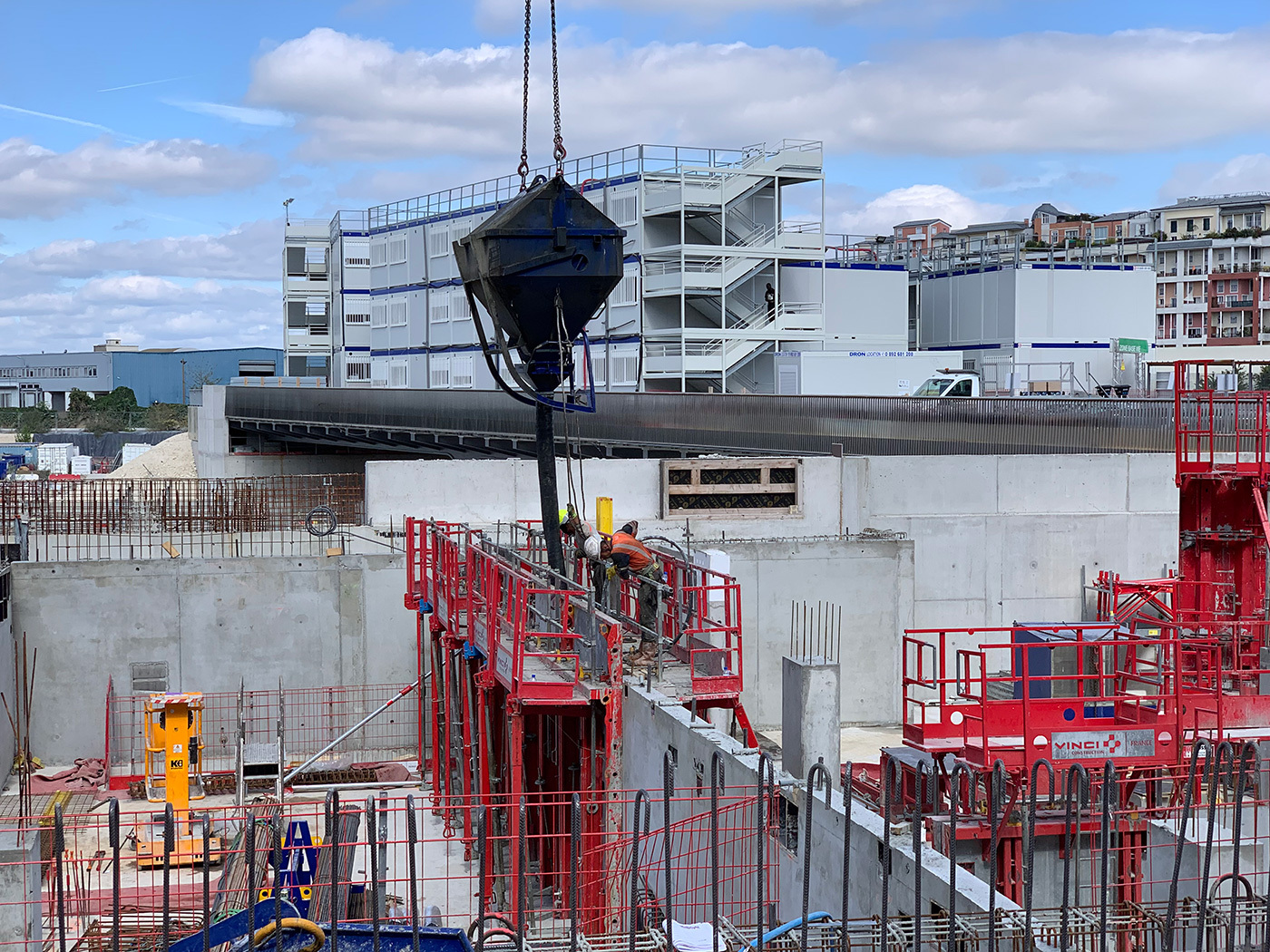

Ultra-low Carbon Cement
70% CO2 emissions
L’Archipel is a mixed-use complex of five buildings housing Vinci’s new headquarters and will accommodate 4,000 employees.
This project is part of the creation of a new district, Les Groues, near the La Défense business district. It is intended to showcase innovative environmental solutions. With its mixed-use development, both a private building and a public structure (the RER E station), it optimizes land resources and limits the environmental impact of construction.
Vinci wants to reduce the footprint of its activities through solutions that are as effective as they are ecological. L’Archipel is a tangible example of the group’s innovations and commitments in terms of energy performance.
L’Archipel is distinguished by the use of a major innovation developed by Vinci in collaboration with Ecocem: the Exegy ultra-low carbon concrete range. Cement clinker is replaced almost entirely by activated ground slag.
Ecocem’s R&D center has worked with Vinci’s engineering and research team to develop a unique activation solution. This innovation has made it possible to create Exegy UBC concrete, which has strength and resistance properties similar to those of traditional concrete and can therefore be used in large structural works.
This binder developed by Ecocem, under ATEX, offers concrete a setting time equivalent to that of traditional concrete, combined with an appropriate implementation methodology.
In the case of Exegy UBC concrete, ground activated slag almost completely replaces clinker, reducing CO2 emissions by nearly 70%.
This reduction in carbon impact is accompanied by excellent performance in terms of compressive strength, tensile strength, modulus of elasticity, behavioral law (stress-strain relationship), shrinkage, creep and fire resistance and durability of over 50 years.
At Ecocem, we place a high value on our own internal sustainability and governance. Find out more here.